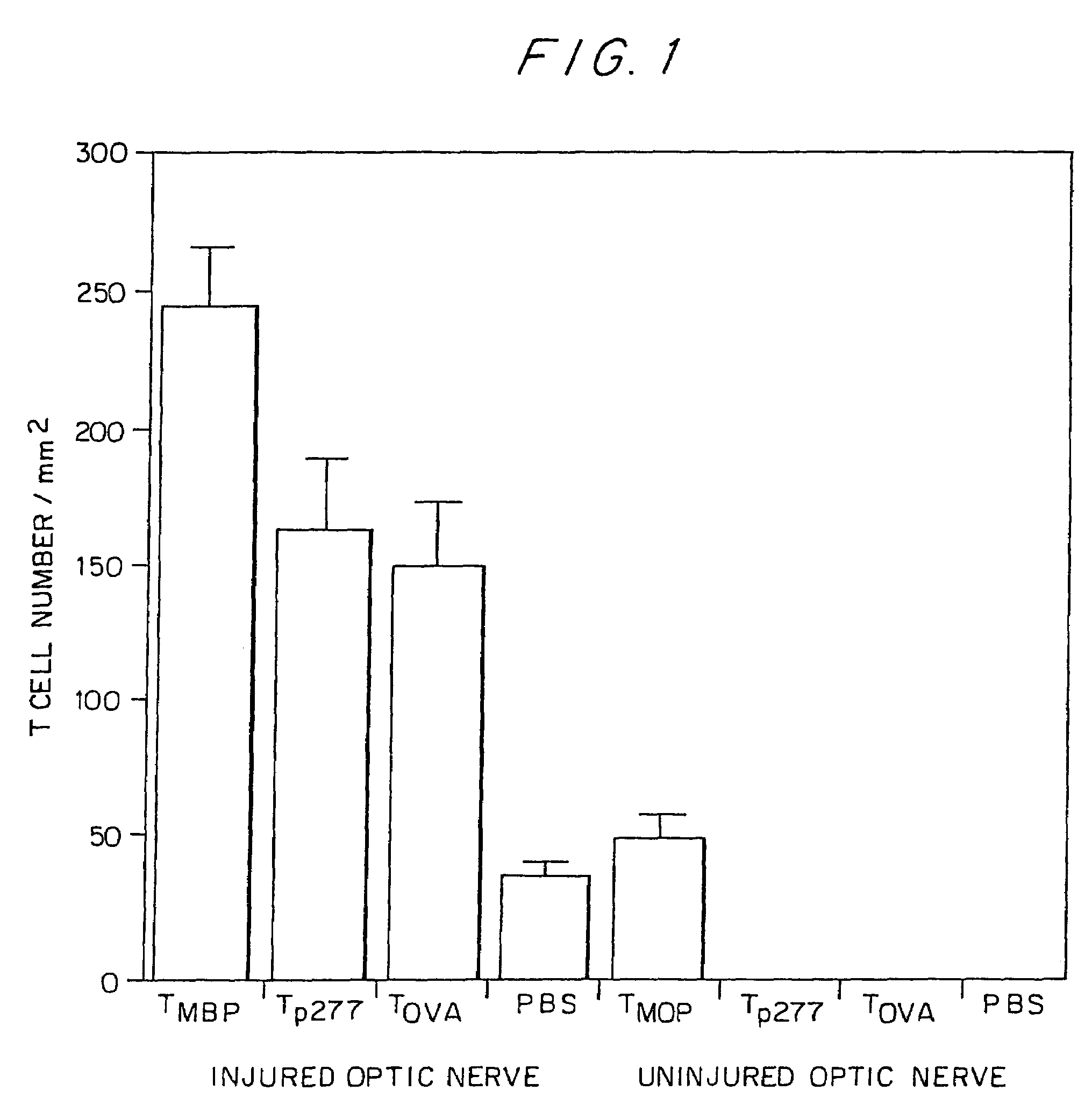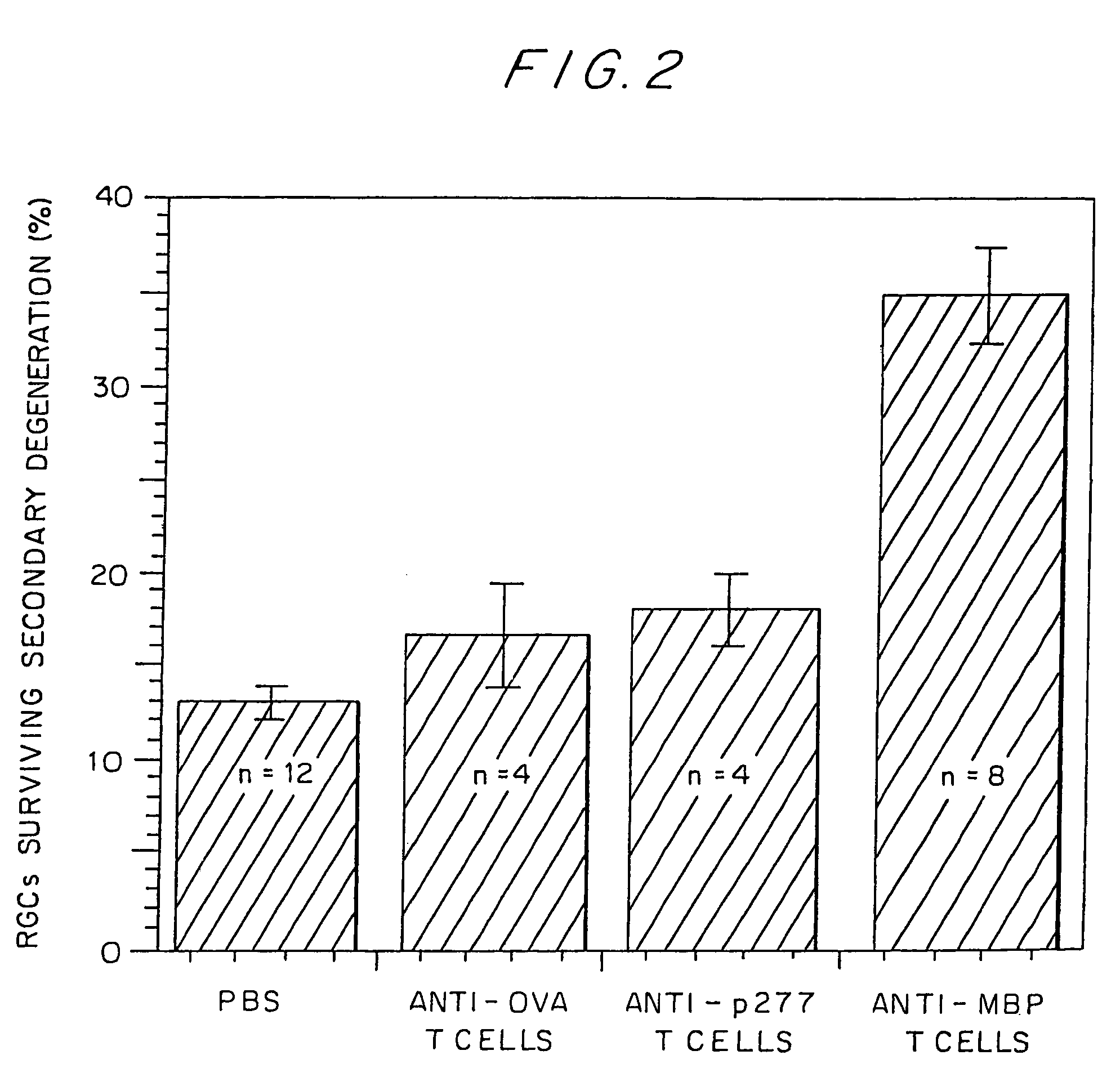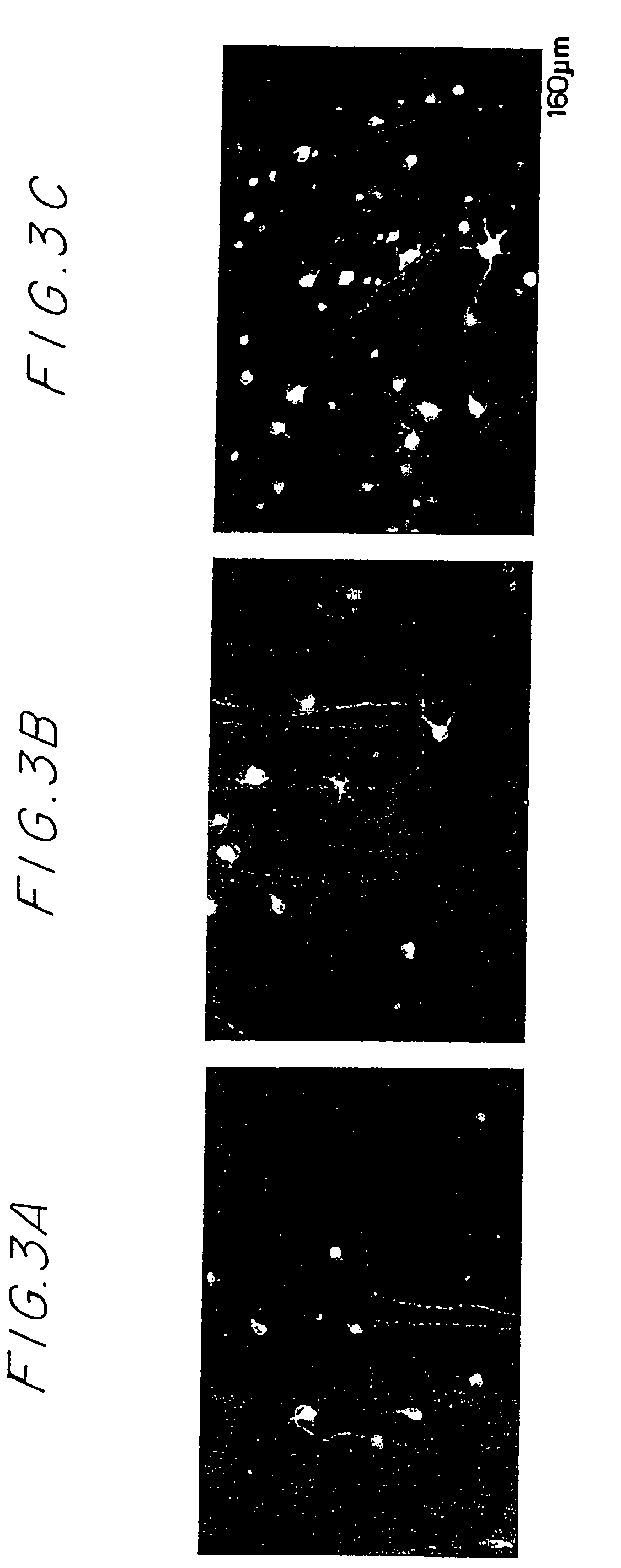Method for reducing neuronal degeneration so as to ameliorate the effects of injury or disease
a neuronal degeneration and injury-induced technology, applied in the direction of drug compositions, peptides, metabolic disorders, etc., can solve the problems of extremely limited axon regeneration after injury in the cns of higher vertebrates, and achieve the effect of increasing the compound action potential (cap) amplitud
- Summary
- Abstract
- Description
- Claims
- Application Information
AI Technical Summary
Problems solved by technology
Method used
Image
Examples
example 1
Accumulation of Activated T Cells in Injured Optic Nerve
Materials and Methods
Animals
[0150]Female Lewis rats were supplied by the Animal Breeding Center of the Weizmann Institute of Science (Rehovot, Israel), matched for age (8-12 weeks) and housed four to a cage in a light and temperature-controlled room.
Media
[0151]The T-cell proliferation medium contained the following: Dulbecco's modified Eagle's medium (DMEM, Biological Industries, Israel) supplemented with 2 mM L-glutamine (L-Glu, Sigma, USA), 5×10−5 M 2-mercaptoethanol (2-ME, Sigma), penicillin (100 IU / ml; Biological Industries), streptomycin (100 μ / ml; Biological Industries), sodium pyruvate (1 mM; Biological Industries), non-essential amino acids (1 ml / 100 ml; Biological Industries) and autologous rat serum 1% (vol / vol) (Mor et al, 1990). Propagation medium contained: DMEM, 2-ME, L-Glu, sodium pyruvate, non-essential amino acids and antibiotics in the same concentration as above with the addition of 10% fetal calf serum (FCS)...
example 2
Neuroprotection by Autoimmune Anti-MBP T Cells Material and Methods
[0157]Animals, media, antigens, crush injury of rat optic nerve, sectioning of nerves, T cell lines, and immunolabeling of nerve sections are described in Example 1, supra.
Retrograde Labeling and Measurement of Primary Damage and Secondary Degeneration
[0158]Primary damage of the optic nerve axons and their attached RGCs were measured after the immediate post-injury application of the fluorescent lipophilic dye 4-Di-10-Asp) (Molecular Probes Europe BV, Netherlands) distal to the site of injury. Only axons that are intact are capable of transporting the dye back to their cell bodies; therefore, the number of labeled cell bodies is a measure of the number of axons that survived the primary damage. Secondary degeneration was also measured by application of the dye distal to the injury site, but two weeks after the primary lesion was inflicted. Application of the neurotracer dye distal to the site of the primary crush aft...
example 3
Neuroprotective Effects of a NS-Specific Antigen Peptide—MOG p35-55
Materials and Methods
[0186]Animals, crush injury of rat optic nerve, and retrograde labeling are described above in Examples 3 and 4. A peptide based on amino acids 35-55 of MOG (MOG p35-55) was chemically synthesized at the Weizmann Institute, Israel.
Inhibition of Secondary Degeneration
[0187]Rats were injected intradermally in the footpads with MOG p35-55 (50 μg / animal) and IFA, or PBS, ten days prior to optic nerve crush injury. RGCs were assessed two weeks after injury using retrograde labeling as described above. The number of RGCs in rats injected with PBS or MOG p35-55 was expressed as a percentage of the total number of neurons in rats injected with MOG p35-55 in the absence of crush injury.
RESULTS
[0188]As shown in FIG. 10, the number of labeled RGCs (indicating viable axons) was about 12.5-fold greater in animals injected with MOG p35-55 compared to animals receiving PBS.
PUM
| Property | Measurement | Unit |
|---|---|---|
| height | aaaaa | aaaaa |
| thick | aaaaa | aaaaa |
| diameter | aaaaa | aaaaa |
Abstract
Description
Claims
Application Information
 Login to View More
Login to View More - R&D
- Intellectual Property
- Life Sciences
- Materials
- Tech Scout
- Unparalleled Data Quality
- Higher Quality Content
- 60% Fewer Hallucinations
Browse by: Latest US Patents, China's latest patents, Technical Efficacy Thesaurus, Application Domain, Technology Topic, Popular Technical Reports.
© 2025 PatSnap. All rights reserved.Legal|Privacy policy|Modern Slavery Act Transparency Statement|Sitemap|About US| Contact US: help@patsnap.com



